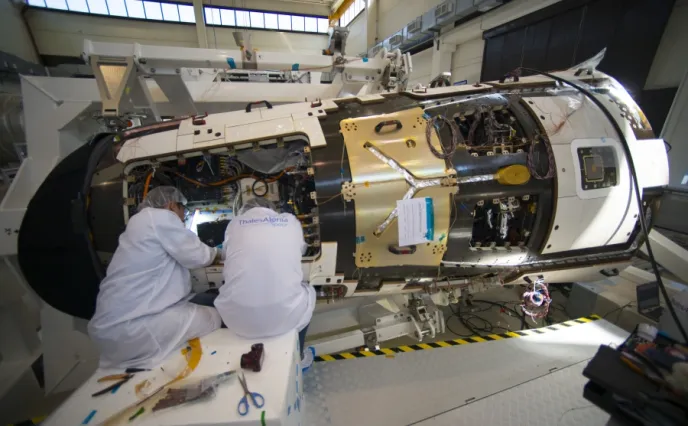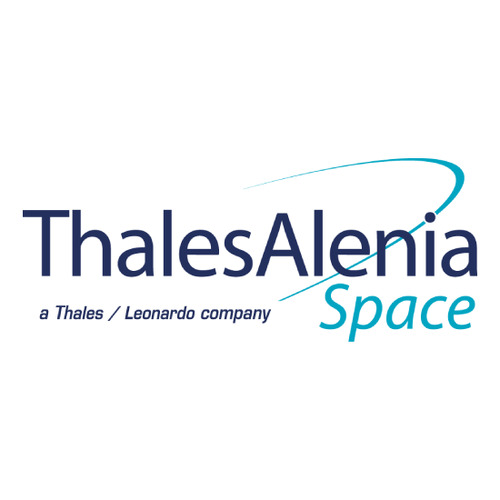Europe's IXV atmospheric reentry demonstrator ready for final tests

Cannes - March 21st, 2014 – IXV (Intermediate eXperimental Vehicle), the European Space Agency’s atmospheric reentry demonstrator developed by Thales Alenia Space, has finished development, and is now completing integration at Thales Alenia Space's clean rooms in Turin.
The spacecraft will be delivered to ESA's ESTEC center in the Netherlands, where it will undergo final testing before being shipped to the launch site at the Guiana Space Center (CSG), Europe's Spaceport in French Guiana.
The IXV demonstrator features advanced aerodynamics due to its lifting body design, which also maximizes maneuverability. It is fitted with a sophisticated guidance, navigation and control system that uses automated control surfaces during the atmospheric reentry phase., plus a heat shield to withstand the searing heat of reentry.
Thales Alenia Space Italia is in charge of the IXV vehicle design, development and integration and heads a consortium of the main European industries, research centers and universities. Italy holds the leading role. The project was strongly supported by the Italian Space Agency, which also provides technical assistance to the project and contributes to both the ground segment, with the Malindi base services, and the mission control, with its own equipment placed at the disposal of the Altec Mission Control Center. This to confirm that reentry systems are of top priority in space development in Italy.
The launch, using Europe's new Vega light launcher, is scheduled for October 2014.
The IXV will separate from Vega at an altitude of 320 kilometers, then continue its ascent to 412 kilometers. It will then begin its reentry, during which experimental data will be collected by the spacecraft's complete instrument suite. During atmospheric reentry, it will reach a speed of approximately 7.7 km/s at an altitude of 120 km, a typical profile for reentry from low Earth orbit (for example, from the space station's orbit).
The mission will last approximately 1 hour and 40 minutes. Following the parachute descent phase, it will culminate with a splashdown in the Pacific Ocean, where the spacecraft will be recovered by a specially equipped ship.
The ground segment is being developed at the same time. The Mission Control Center, developed and operated by ALTEC in Turin, will be at the heart of the entire mission.
“The design and construction of this technology demonstrator clearly establishes Thales Alenia Space as the European benchmark in space transport and reentry systems," said Luigi Maria Quaglino, Senior Vice President for Exploration and Science at Thales Alenia Space. "It also paves the way for further developments leading to next-generation systems.”
About Thales Alenia Space:
Thales Alenia Space, a joint venture between Thales (67%) and Finmeccanica (33%), is a key European player in space telecommunications, navigation, Earth observation, exploration and orbital infrastructures. Thales Alenia Space and Telespazio form the two parent companies' “Space Alliance”, which offers a complete range of services and solutions. Because of its unrivaled expertise in dual (civil/military) missions, constellations, flexible payloads, altimetry, meteorology and high-resolution optical and radar instruments, Thales Alenia Space is the natural partner to countries that want to expand their space program. The company posted consolidated revenues in excess of 2 billion euros in 2013, and has 7,500 employees in six countries. www.thalesaleniaspace.com
Thales Alenia Space Press Contacts:
Sandrine Bielecki
Tel: +33 (0)4 92 92 70 94
sandrine.bielecki@thalesaleniaspace.com
Tarik Lahlou
Tel: +33 (0)4 92 92 68 45
tarik.lahlou@thalesaleniaspace.com
Tiziana Ebano
Tel: +39 06 41 51 25 74
tiziana.ebano@thalesaleniaspace.com

